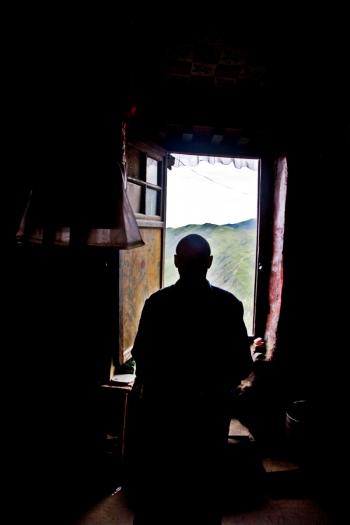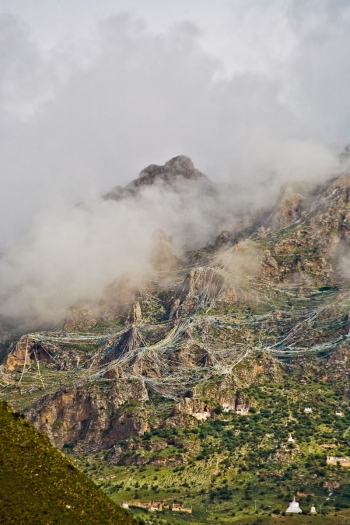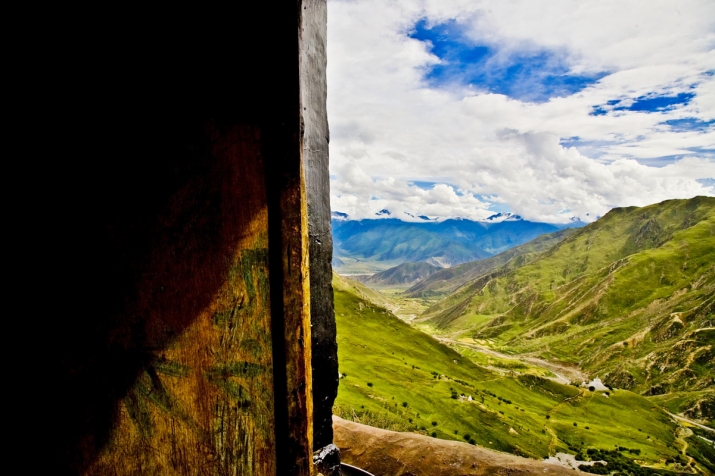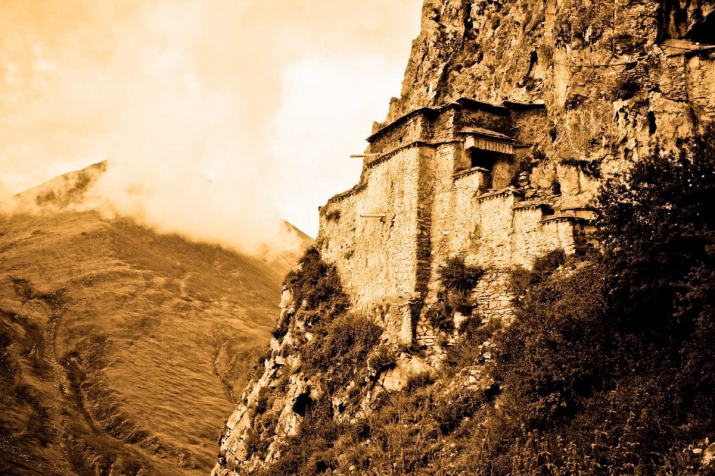In photography, we are working with light. Simple light. That is if we are simple in our perception. But how does that come to be?
This is where Buddhist practice shines some light on the art of photography, and likewise the practice of photography on the art of Buddhist practice. There is a dialogue that takes place here, a reflection, where each starts to inform the other.
When one first comes to sit in the practice of meditation, one discovers—like a rushing river, as the classic texts express it—how much motion is simply going on in the mind all the time. Thought after thought. How often in this great torrent of the energy of the mind and habitual thoughts is perception ever offered the chance to be simple? In the act of meditation, we discover how elusive actual simplicity can be.
What is more, as one continues in any sitting practice, the layers and layers of interweaving conditoning factors that come together—from coarse levels of personal experience to cultural and social influences—become apparent. A myriad web of conditions are discovered—are witnessed—generating these innumerable thoughts, the content and emotional attitudes of which are the lenses through which any perception of self, other, phenomena, the world, unfolds.
In some senses, the effect of fine photography, the quality with which it affects our being, is in that it offers a window onto that which meditation practice, in part, serves to provide—simplicity. Stillness. In a way, the limitations of the photographic frame, that ubiquitous rectangle on a very unrectangular world, are the very thing that gives it its magic, and its power. What is not included allows the singular focus, strength, and presence of what is. For that moment at least. This is analagous to moments in meditation when some stability in calm abiding is sustained. When what is there is just there. There is great joy in this. And we feel how rare and precious it is.
This image of the fine photographic image as a stable, focused, guided meditation serves to explain one aspect of what draws us to photography, at least contemplative photography. We treasure the timelessness and vibrant presence of a moment within continuous transience stilled before our eyes. And yet, no matter the effect of a photograph on a viewer, or on the photographer for that matter, the effect that the technical apparatus of a camera provides . . . how many remain in this stillness or magic for long? The very preciousness of the image reminds us somehow of something precious within our own being, which it stirs, but which remains for the most part elusive. Life and thoughts flurry on.
And so the call to practice returns, that we might be able to enjoy such simplicity and power, just so within, in the way that quality photography offers without.
If photography indeed calls us in some way to the desire for calm abiding, the experience of beauty within stillness, what about light itself? In the practice of meditation, there is a progression from shamatha (calm abiding with an object of meditation) to vipashyana (clear seeing or luminous insight) that creates the opportunity to see into the essence of what is seen.
Here again we discover a parallel between photography and meditation practice. The heart of both is working with luminosity. Clear seeing. And the way in which the practice of each, mindfully and skillfully, could influence and inform the other becomes apparent. They are art forms, in a sense, of unbounded potential. In each, the discoveries of what can be seen clearly (as much as unclearly!) are virtually unlimited. Phenomena continue to unfold. Some appreciation emerges in one who cherishes the opportunities to experience beauty, its very availability, this unceasing quality of ongoing luminosity and the myriad ways, both dazzling and subtle, in which it manifests. The joy of the image, of the direct experience of the beautiful, reflects the joy of practice. And vice versa.
And then we come to symbols, at which we may only really hint in the space here, but which are there for us all to investigate, in our lives, in either our creation or experiencing of art, and in our meditative practices.
 "Approaching the View." From Michael Ash, Dharma Eye.
"Approaching the View." From Michael Ash, Dharma Eye. "Drak Yerpa II." From Michael Ash, Dharma Eye.
"Drak Yerpa II." From Michael Ash, Dharma Eye.Here, a single photographic image, “Approaching the View” from Padmasambhava’s cave at Drak Yerpa in Tibet, may serve to illustrate these analogies, reflecting both the process of meditation practice as well as the discoveries one may make in a mindful enactment of the art of photography. It is image of an opening onto the view.
Taken from a famous practice cave of Guru Rinpoche, the great meditation master renowned for the transmission of Buddhism to Tibet, and through it now to the modern world, it illustrates on many levels the effects of meditation practice. The caretaker monk in the temple shrine built around the cave is walking slowly towards an open window that looks out to the open space beyond; we see a glimpse around his silhouetted head and still frame a green mountain valley in the expanse outside the shrine. If the shrine is taken as the act and place of meditation within the mind, it reflects an approach through that stillness, that very inner shrine, that opens into a view beyond one’s own limited or personal experience (beyond the frame, as it were, yet through it) to an expanse of experience and possibilities opened. Possibilities only viewed and discovered from that very space of practice.
It is an image of how the sacredness of practice within opens the world without. There are frames and what they open to—what the frame of art or practice can reveal.
It is a simple reflection of how limits, whether that of a particular art form or meditation practice, can open us to what is unlimited. But is this simple?
Only one’s own ongoing practice or art, or a combination of the two, may tell.
Michael Ash is the founder of Dharma Eye, a Buddhist photographers' collective. For further information, have a look at the Dharma Eye website.


















